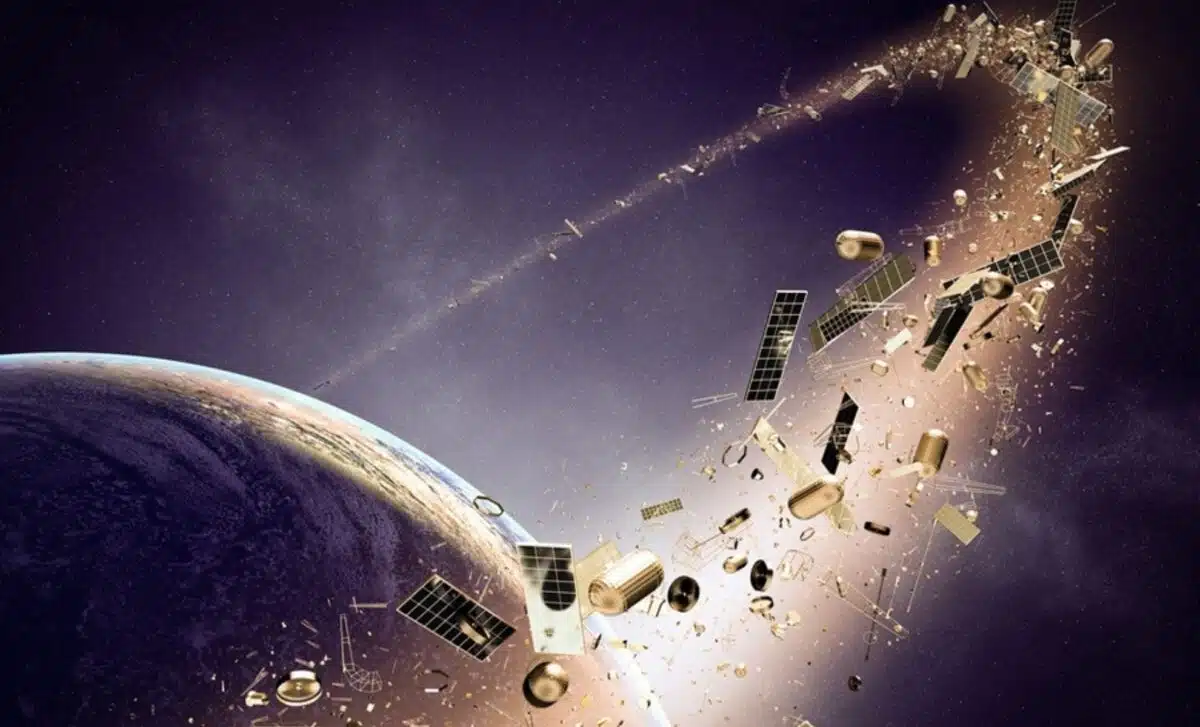
Published on June 19, 2024 09:10 By Lydia Amazouz
Collected at: https://dailygalaxy.com/2024/06/ozone-layer-growing-threat-space-junk/
Recent studies have raised alarms about the growing threat of space junk to Earth’s ozone layer. Thousands of satellites, particularly those in megaconstellations like SpaceX’s Starlink, pose a significant environmental risk as they burn up in the atmosphere at the end of their service lives. These findings have significant implications for future satellite launches and global internet services.
Impact of Satellite Constellations on the Ozone Layer
Aluminum Oxide and Ozone Depletion
The ozone layer, located in the stratosphere, is a critical component of Earth’s atmosphere that absorbs most of the Sun’s harmful ultraviolet (UV) radiation. This protective layer shields life on Earth from UV rays, which can cause skin cancer, cataracts, and other health issues, as well as negatively impact plant growth and marine ecosystems.
As internet-providing satellites reach the end of their operational life, they disintegrate upon reentry into Earth’s atmosphere. This process releases small aluminum oxide particles, which initiate chemical reactions that deplete the stratospheric ozone layer. According to a study published in Geophysical Research Letters, the presence of these particles has surged eightfold from 2016 to 2022 and is expected to keep rising with the increasing number of satellites in low-Earth orbit.
Aluminum oxides released during satellite reentry do not react directly with ozone molecules. Instead, they act as catalysts that facilitate destructive reactions between ozone and chlorine compounds present in the stratosphere. These reactions break down ozone molecules, reducing the overall concentration of ozone in the layer. Because aluminum oxide particles are not consumed in these reactions, they can continue to deplete ozone for decades as they drift down through the stratosphere.
Joseph Wang, a researcher at the University of Southern California and corresponding author of the study, highlighted the growing concern: “Only in recent years have people started to think this might become a problem.” The increased levels of aluminum oxides from satellite reentries could potentially offset the recovery progress made since the implementation of the Montreal Protocol in 1987, which successfully regulated ozone-depleting substances like CFCs.
Growth of Satellite Constellations
The demand for global internet coverage has driven a rapid increase in the number of small communication satellites being launched. SpaceX’s Starlink, with over 6,000 satellites already in orbit and plans for thousands more, is at the forefront of this expansion. Other companies like Amazon are also planning large satellite constellations, ranging from 3,000 to 13,000 satellites.
Joseph Wang, a researcher at the University of Southern California and corresponding author of the study, highlighted the growing concern: “Only in recent years have people started to think this might become a problem.” The increased levels of aluminum oxides from satellite reentries could potentially offset the recovery progress made since the implementation of the Montreal Protocol in 1987, which successfully regulated ozone-depleting substances like CFCs.
Growth of Satellite Constellations
The demand for global internet coverage has driven a rapid increase in the number of small communication satellites being launched. SpaceX’s Starlink, with over 6,000 satellites already in orbit and plans for thousands more, is at the forefront of this expansion. Other companies like Amazon are also planning large satellite constellations, ranging from 3,000 to 13,000 satellites.
The Montreal Protocol of 1987 successfully regulated ozone-depleting substances like CFCs, leading to the gradual recovery of the ozone layer. However, the unexpected increase in aluminum oxides from satellite reentry could undermine these efforts, disrupting the progress made in ozone recovery over the past few decades.
Calls for Further Research and Regulation
As satellite reentry rates increase, researchers stress the importance of addressing these environmental concerns. The potential long-term impacts of aluminum oxides on the ozone layer necessitate more comprehensive studies and possibly new regulations for satellite launches and disposal.
“Only in recent years have people started to think this might become a problem,” Wang reiterated. The study calls for increased awareness and action to mitigate the environmental footprint of satellite constellations, ensuring that advancements in global internet coverage do not come at the expense of our planet’s protective ozone layer.
These findings highlight a critical intersection of technological advancement and environmental stewardship, urging policymakers, scientists, and industry leaders to collaborate on sustainable solutions for space exploration and satellite deployment.

Leave a Reply